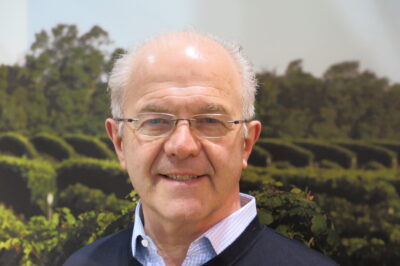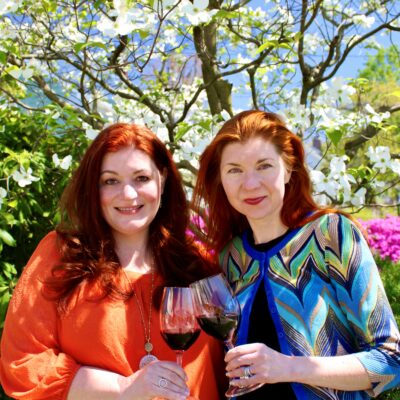
Finding a niche for unfamiliar wine in a large market is a Sisyphean, largely unheralded, task.
Given the choice between two similarly priced items, one of which is a known entity, and the other of which they’ve never heard of, most consumers—whether they’re shopping for lawn equipment or Riesling—are going to opt for the one they’ve heard of.
Robert Ketchin has been honored by the New York Wine & Grape Foundation with the Jim Finkle Industry Award, for his work creating a market from whole cloth for New York-grown wine in Canada. His 50-year journey through wine began in what may seem an inauspicious role as a teenager.
Ketchin launched his career in his native England at age 16, when he trained as a butcher and fishmonger at MacFisheries; but he soon also earned a place at one of the oldest wine merchants in England, Hedges & Butler. He felt the pull of greener pastures and emigrated to Canada as a buyer at Versa Food Services.
But Ketchin was bitten by the wine bug at Butler, and pivoted to sell some of the world’s most storied wines (Chateau Lafite Rothschild and Latour were two early favorites) at the import shop Sainsbury International. For the next several years, the now 73-year-old hopscotched around bold-faced wine and beer outfits, until he decided to take everything he’d gleaned from working with brands, retailers, importers and restaurants to create Ketchin Sales & Marketing in 1991.
“I presented myself as a contract advisor for marketing and sales,” Ketchin recalls. “I had relationships with members of the Liquor Board in Canada, and at other key accounts.”
Several clients—including the New York Wine & Grape Foundation and New Zealand Winegrowers—eagerly signed on to leverage the relationships he had with buyers. But even with his connections, New York wine was a tough sell, Ketchin admits.
“New York wines were not known in Canada in the early 90’s,” he explains. “Local wines, whether from Ontario or further afield in New York, were not popular. Cool climate grape varieties were not appreciated. People were looking for big, round warm climate vinifera wines with high alcohol, not thin high-acid wines and hybrids.”
Then there was the packaging and the price. Wine lovers buy with their eyes if they’re not familiar with a grape or region, Ketchin says.
“New York labels lacked finesse,” he says. “Most of all though, New York wines were expensive in comparison with more familiar cheap jammy imports from Australia, Chile, Argentina, Spain and France. The U.S. dollar is also a factor for the past 30 years, automatically making the wine 20% more expensive and the LCBO [Liquor Control Board of Ontario] markup of 70% on top of that exacerbated the price difference for New York versus all other wines.”
He made headway by inviting members of the LCBO to New York wine regions so they could see and taste the wines where they were grown and meet the people behind the labels. After that, the LCBO brought in more than 500 cases from Long Island and the Finger Lakes.
Now, there’s a thirsty market for New York Wines, especially Riesling, Chardonnay, Pinot Noir and Cabernet Franc, Ketchin says. And perhaps even more, new Pét Nats, orange wines and unique varietals like Blaufränkisch and Grüner Veltliner, which local growers in Ontario are less likely to produce.
The market has also connected with certain labels thanks to their and Ketchin’s in-market promotions.
“There are some fabulous packages like Wölffer Summer in a Bottle Rosé and innovative winemaking at Living Roots Session Reds that Canadians connect with,” he says.
These inroads were forged through tireless promotional programs in partnership with the New York Wine & Grape Foundation—from private and public wine tastings, to masterclasses and outreach to sommeliers and influencers, to grueling weeks on the road at trade and consumer shows.
“No winery can build a category or reputation for excellence alone,” Ketchin says. “It has been a privilege to represent New York in Canada. It takes incredible commitment, partners, relationships, time on the road, budget, leadership, and creative marketing and messaging. There are memories and friendships that will last a lifetime and that I will continue to savor from my work there. It’s exciting to see New York continue to export and push forward.”
New York couldn’t have done it without Ketchin.

About the Unity Awards
The Unity Awards were created in 1990 as a way to recognize, encourage, and celebrate cooperation among grape growers, wineries (and their staff), researchers, retailers and others to advance the entire industry. The winery and grower community in New York state has a rich history of working and succeeding together despite facing a variety of challenges through the years. Recognizing the longstanding and bold spirit of our community members and their numerous achievements, the New York Wine & Grape Foundation is proud to continue honoring industry leaders & champions of New York wine for more than 30 years.

